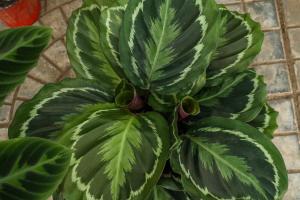How to Check Moisture in Potted Plants
Potted plants require consistent watering to thrive. Underwatering or overwatering can lead to a variety of problems, including root rot and stunted growth. Therefore, it's crucial to monitor the soil moisture level regularly. Here are some tips on how to check the moisture in potted plants:
Method 1: Insert Your Finger into the Soil
The simplest way to check for moisture is to stick your finger into the soil – about two inches deep. If the soil feels dry, it's time to water your plant. If it feels moist, wait a few more days before watering again. Be sure to wash your hands before and after checking the soil moisture level to avoid transmitting diseases or pests to your plants.
Method 2: Use a Moisture Meter
If you don't want to get your hands dirty, you can use a moisture meter to check the soil moisture level. A moisture meter has a probe that you stick into the soil, and it measures the amount of moisture present. Some moisture meters also have a pH meter or a light sensor, which can give you more information about your plant's health. Moisture meters are available at most garden centers and online retailers.
Method 3: Lift the Pot
If you're familiar with your plant's weight when it's fully watered, you can lift the pot to feel for its weight. If the pot feels light, it's time to water your plant. If it feels heavy, the soil is still moist, and you can wait a few more days before watering again. This method is useful for larger plants that are difficult to move.
Method 4: Visual Inspection
You can also tell if your plant needs water by inspecting the soil visually. Dry soil will appear lighter in color and will pull away from the edges of the pot. Wet soil will appear darker in color and will be more compact. However, this method is not always reliable, especially if you have different types of soil in the pot, or if the top layer of soil dries out faster than the bottom.
Tips for Watering Potted Plants
Now that you know how to check the moisture level in your potted plants, here are some tips for watering them:
Water your plants early in the morning, when the temperature is cooler and the soil can absorb the moisture better.
Use room-temperature water to avoid shocking the roots.
Water the plant evenly, making sure the water reaches the roots.
Don't let the plant sit in standing water, as this can lead to root rot.
Use a pot with drainage holes to allow excess water to escape.
By following these tips and checking the soil moisture regularly, you can keep your potted plants healthy and thriving for years to come!

 how many times do yo...
how many times do yo... how many planted tre...
how many planted tre... how many pine trees ...
how many pine trees ... how many pecan trees...
how many pecan trees... how many plants comp...
how many plants comp... how many plants can ...
how many plants can ... how many plants and ...
how many plants and ... how many pepper plan...
how many pepper plan...































